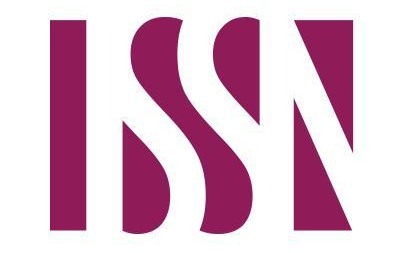تأثير تدريب التباطؤ على مهارات التوازن الديناميكي لدى لاعبي كرة القدم الشباب
محتوى المقالة الرئيسي
الملخص
يهدف البحث الى: تقييم أثر أسلوب التدريب بالتباطؤ في تحسين مهارات التوازن الديناميكي لدى لاعبي كرة القدم الشباب مقارنة بأساليب التدريب التقليدية. شملت عينة البحث على 26 لاعب كرة قدم كما تم استعمال المنهج التجريبي بسبب ملائمته لطبيعة البحث، تم تحليل الاختلافات بين المتوسطات باستخدام ويلكوكسون، وتم تحليل المقارنة بين المجموعتين باستخدام تحليلات مان-ويتني-يو اللاحقة. واستنتج الباحث البرنامج التدريبي التباطؤي يساهم في تطوير الأداء التوازن الديناميكي لدى لاعبي كرة القدم الشباب أكثر من البرنامج التدريبي التقليدي وأوصى: إدراج منطقة التباطؤ في تدريبات السرعة للاعبي كرة القدم الشباب. ويمكن دراسة تأثير التدريب على السرعة بما في ذلك منطقة التباطؤ على المهارات الحركية المختلفة.
تفاصيل المقالة

هذا العمل مرخص بموجب Creative Commons Attribution-NonCommercial 4.0 International License.
المراجع
BadrKhalaf, H. , Aldewan, L. H., & Abdul-Hussein, Th. S. (2021). The effect of McCarthy ’s model on developing the football scoring skill for students. Journal of Studies and Researches of Sport Education, 67, 170–182. https://www.iasj.net/iasj/article/213521
Bloomfield, J., Polman, R., O’donoghue, P., & McNaughton, L. (2007). Effective speed and agility conditioning methodology for random intermittent dynamic type sports. The Journal of Strength & Conditioning Research, 21(4), 1093–1100.
Bruhn, S., Kullmann, N., & Gollhofer, A. (2006). Combinatory effects of high-intensity-strength training and sensorimotor training on muscle strength. International Journal of Sports Medicine, 27(05), 401–406.
Camliguney, A. F. (2013). The effects of short-term ski trainings on dynamic balance performance and vertical jump in adolescents. Educational Research and Reviews, 8(10), 568.
Gonell, A. C., Romero, J. A. P., & Soler, L. M. (2015). Relationship between the Y balance test scores and soft tissue injury incidence in a soccer team. International Journal of Sports Physical Therapy, 10(7), 955.
Gorostiaga, E. M., Izquierdo, M., Ruesta, M., Iribarren, J., Gonzalez-Badillo, J. J., & Ibanez, J. (2004). Strength training effects on physical performance and serum hormones in young soccer players. European Journal of Applied Physiology, 91, 698–707.
Helgerud, J., Engen, L. C., Wisløff, U., & Hoff, J. A. N. (2001). Aerobic endurance training improves soccer performance. Medicine & Science in Sports & Exercise, 33(11), 1925–1931.
Hewit, J., Cronin, J., Button, C., & Hume, P. (2011). Understanding deceleration in sport. Strength & Conditioning Journal, 33(1), 47–52.
Izzo, R., & Lo Castro, L. (2015). The study of acceleration and deceleration capacity decrease in repeated sprints in soccer. International Journal of Physical Education, Sport and Health, 2(2), 1685–2394.
Jeffreys, I. (2013). Developing speed. Human Kinetics.
Khazal, H. N., Rasoul, T. H. A., & Mohammed, L. H. (2024). The effect of the self-scheduling strategy (KWL) in developing tactical knowledge and some football skill abilities for students. Journal of Studies and Researches of Sport Education, 34(1).
Kovacs, M. S. (2006). Applied physiology of tennis performance. British Journal of Sports Medicine, 40(5), 381–386.
Kovacs, M. S., Roetert, E. P., & Ellenbecker, T. S. (2008). Efficient deceleration: The forgotten factor in tennis-specific training. Strength & Conditioning Journal, 30(6), 58–69.
Kovacs, M. S., Roetert, E. P., & Ellenbecker, T. S. (2015). Efficient deceleration: The forgotten factor in tennis-specific training. Strength & Conditioning Journal, 37(2), 92–103.
Krustrup, P., Mohr, M., Ellingsgaard, H., & Bangsbo, J. (2005). Physical demands during an elite female soccer game: importance of training status. Medicine & Science in Sports & Exercise, 37(7), 1242–1248.
Lakomy, J., & Haydon, D. T. (2004). The effects of enforced, rapid deceleration on performance in a multiple sprint test. The Journal of Strength & Conditioning Research, 18(3), 579–583.
Lees, A. (2002). Technique analysis in sports: a critical review. Journal of Sports Sciences, 20(10), 813–828.
Lockie, R. G., Schultz, A. B., Callaghan, S. J., & Jeffriess, M. D. (2014). The effects of traditional and enforced stopping speed and agility training on multidirectional speed and athletic function. The Journal of Strength & Conditioning Research, 28(6), 1538–1551.
Lockie, R. G., Schultz, A. B., Jeffriess, M. D., & Callaghan, S. J. (2012). The relationship between bilateral differences of knee flexor and extensor isokinetic strength and multi-directional speed. Isokinetics and Exercise Science, 20(3), 211–219.
Lunsford-Avery, J. R., Kollins, S. H., & Mitchell, J. T. (2021). Sluggish cognitive tempo in adults referred for an ADHD evaluation: A psychometric analysis of self-and collateral report. Journal of Attention Disorders, 25(3), 322–331.
Musharraf, A. J., Harbi, A. R. N., Hammadi, J. N., & Fayhan, A. Q. S. A. (2022). A study comparing some motor abilities between soccer and handball players. Sciences Journal Of Physical Education, 15(3).
Onofrei, R.-R., Amaricai, E., Petroman, R., Surducan, D., & Suciu, O. (2019). Preseason dynamic balance performance in healthy elite male soccer players. American Journal of Men’s Health, 13(1), 1557988319831920.
Pau, M., Arippa, F., Leban, B., Corona, F., Ibba, G., Todde, F., & Scorcu, M. (2015). Relationship between static and dynamic balance abilities in Italian professional and youth league soccer players. Physical Therapy in Sport, 16(3), 236–241.
Plisky, P. J., Gorman, P. P., Butler, R. J., Kiesel, K. B., Underwood, F. B., & Elkins, B. (2009). The reliability of an instrumented device for measuring components of the star excursion balance test. North American Journal of Sports Physical Therapy: NAJSPT, 4(2), 92.
Rasoul, T. H. A. (2024). Evaluating The Effectiveness Of Different Teaching Methods In Improving Skill Performance In Teaching Football. Journal of Studies and Researches of Sport Education, 34(2), 70–80. https://doi.org/10.55998/jsrse.v34i2.505
Teixeira, L. A., de Oliveira, D. L., Romano, R. G., & Correa, S. C. (2011). Leg preference and interlateral asymmetry of balance stability in soccer players. Research Quarterly for Exercise and Sport, 82(1), 21–27.
Tracey, S.-Y., Anderson, D. I., Hamel, K. A., Gorelick, M. L., Wallace, S. A., & Sidaway, B. (2012). Kicking performance in relation to balance ability over the support leg. Human Movement Science, 31(6), 1615–1623.





 IASJ
IASJ CC-BY-4.0
CC-BY-4.0 turnitin
turnitin ISSN
ISSN DOAJ
DOAJ Crossref
Crossref GoogleScholar
GoogleScholar Orcid
Orcid